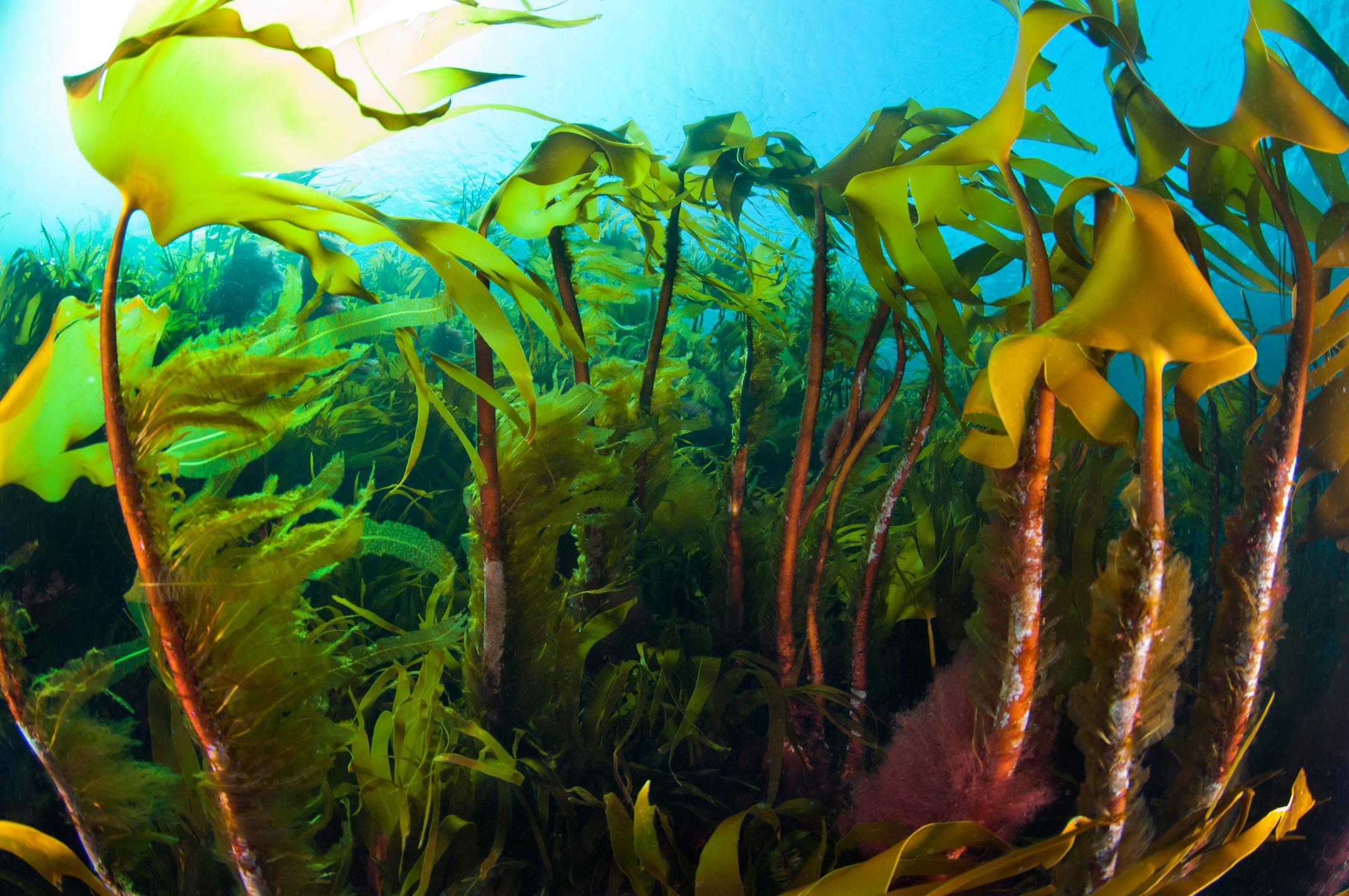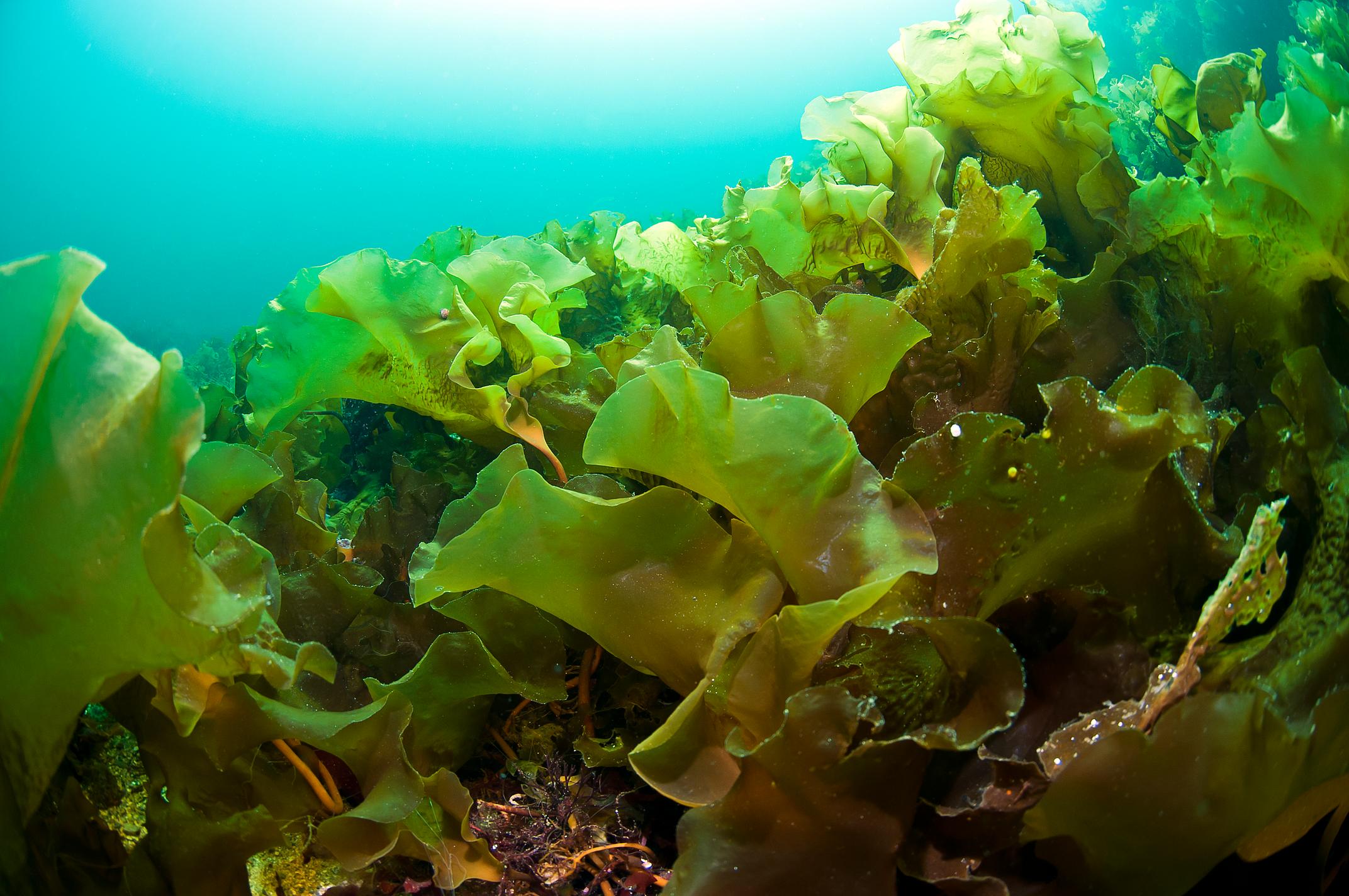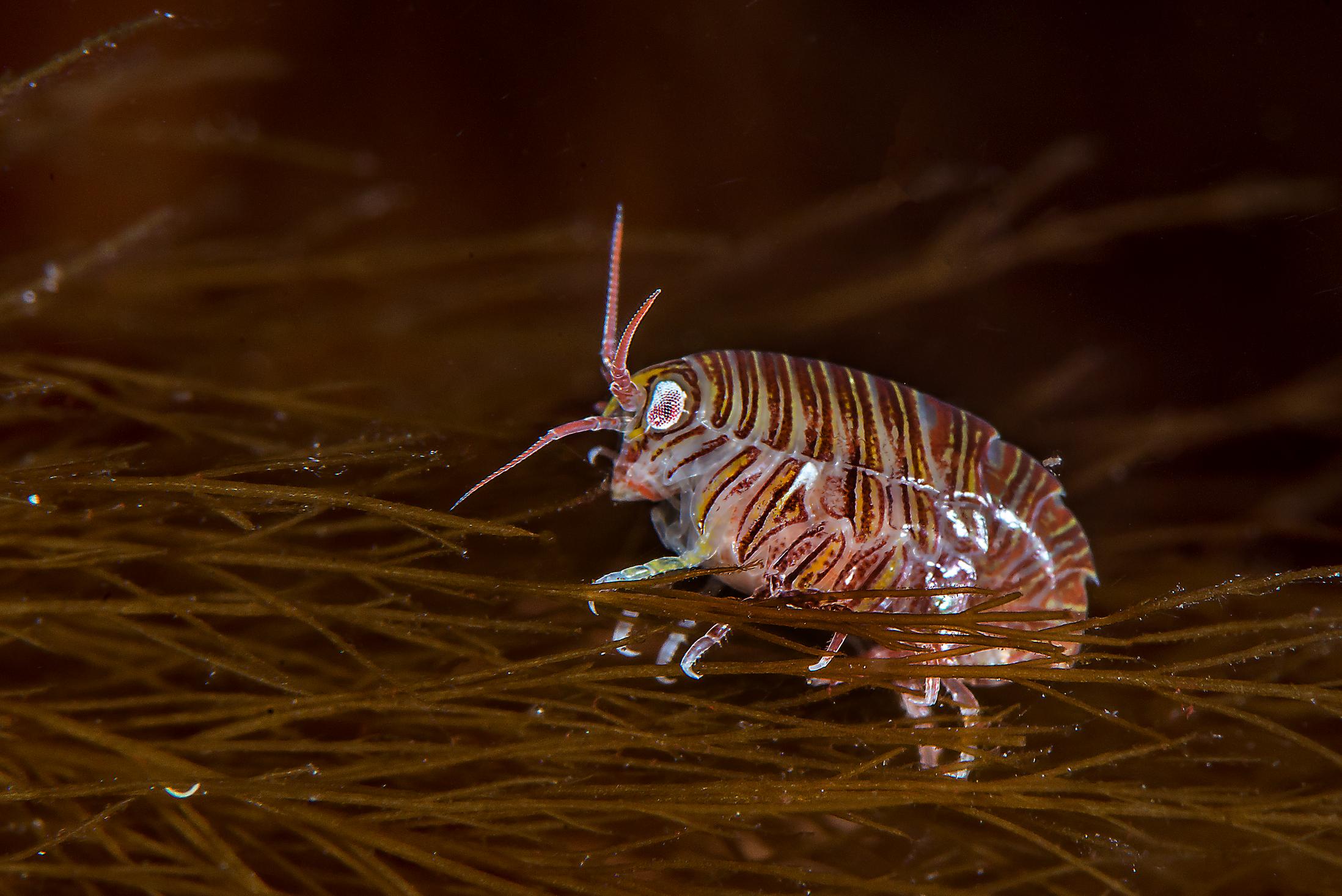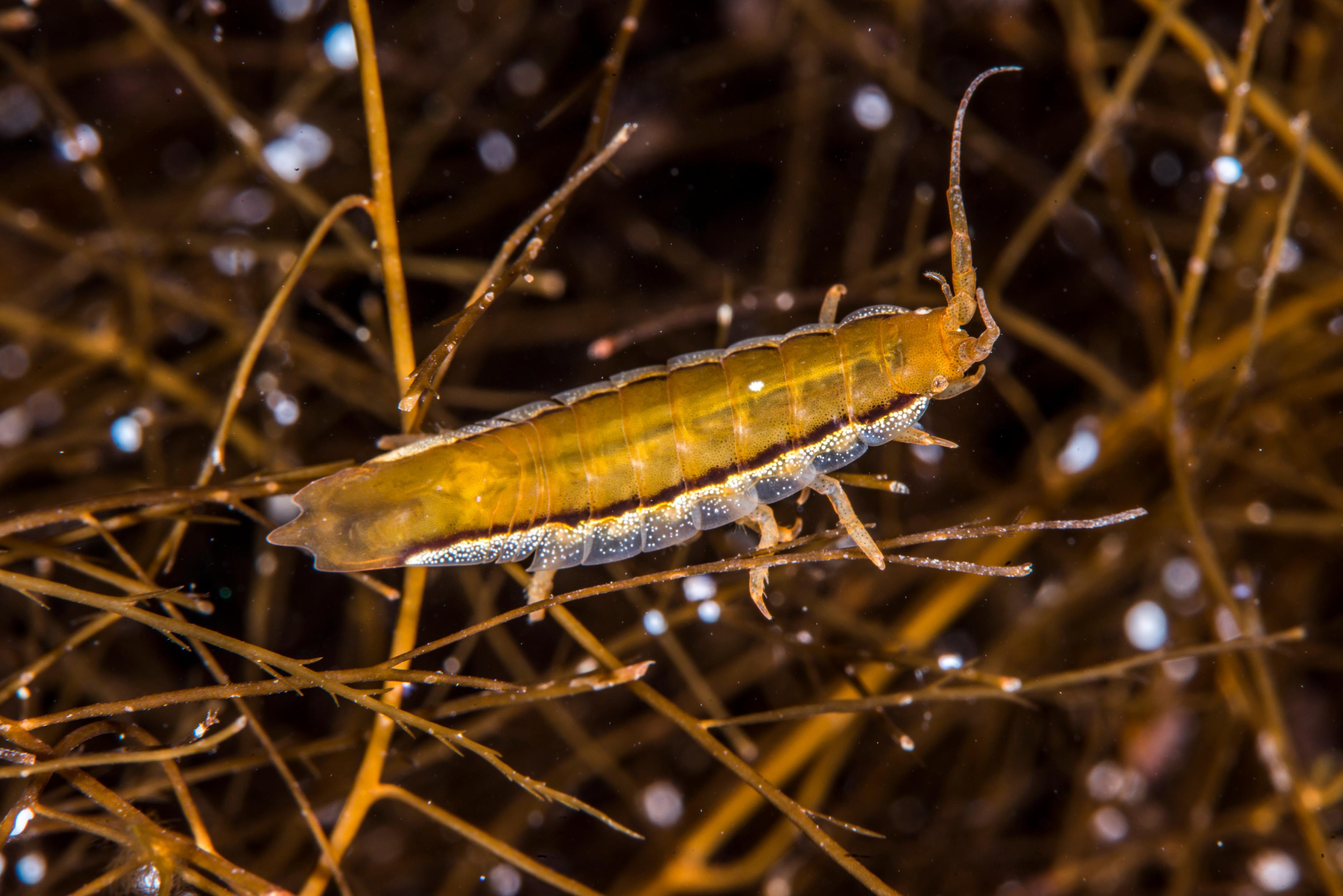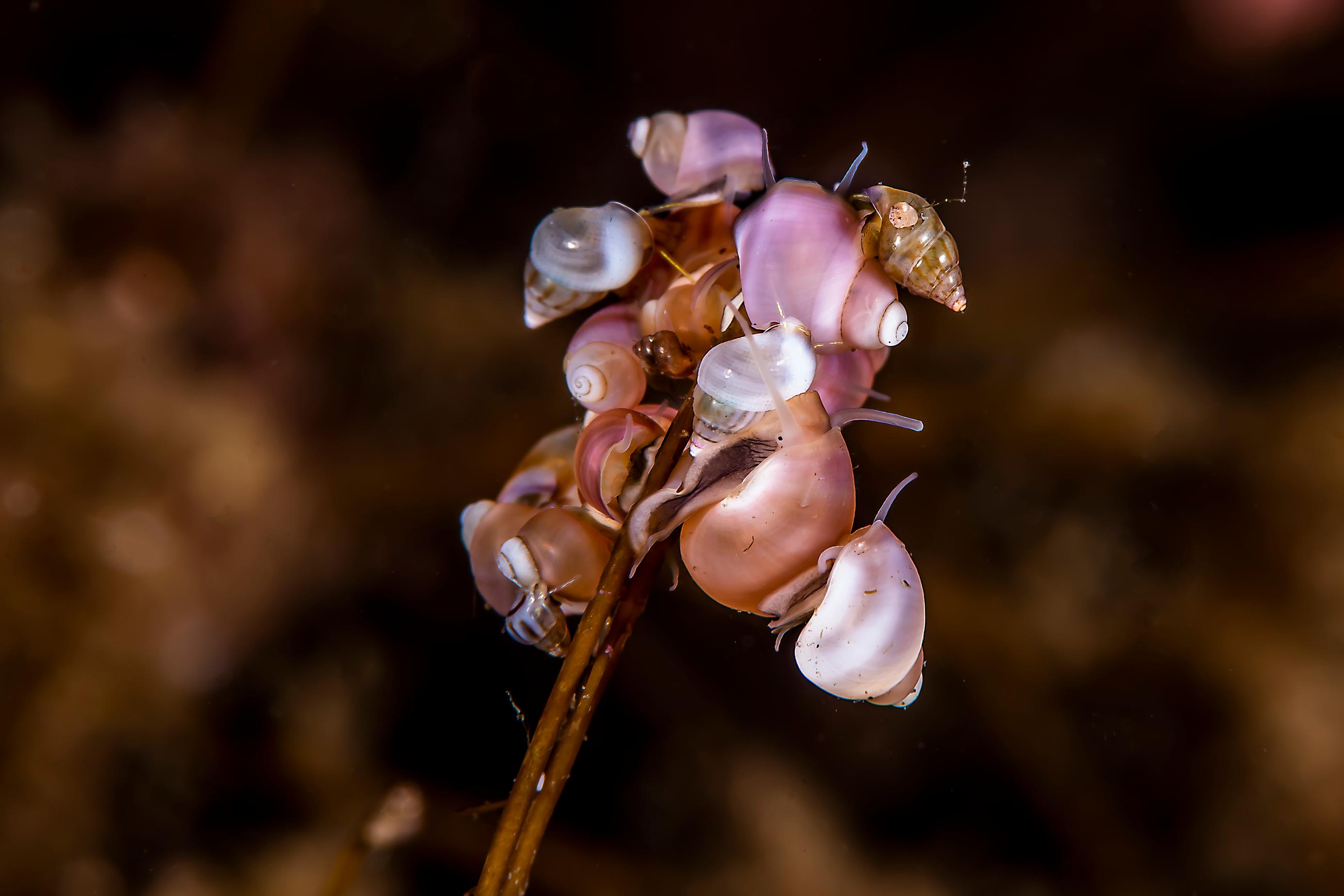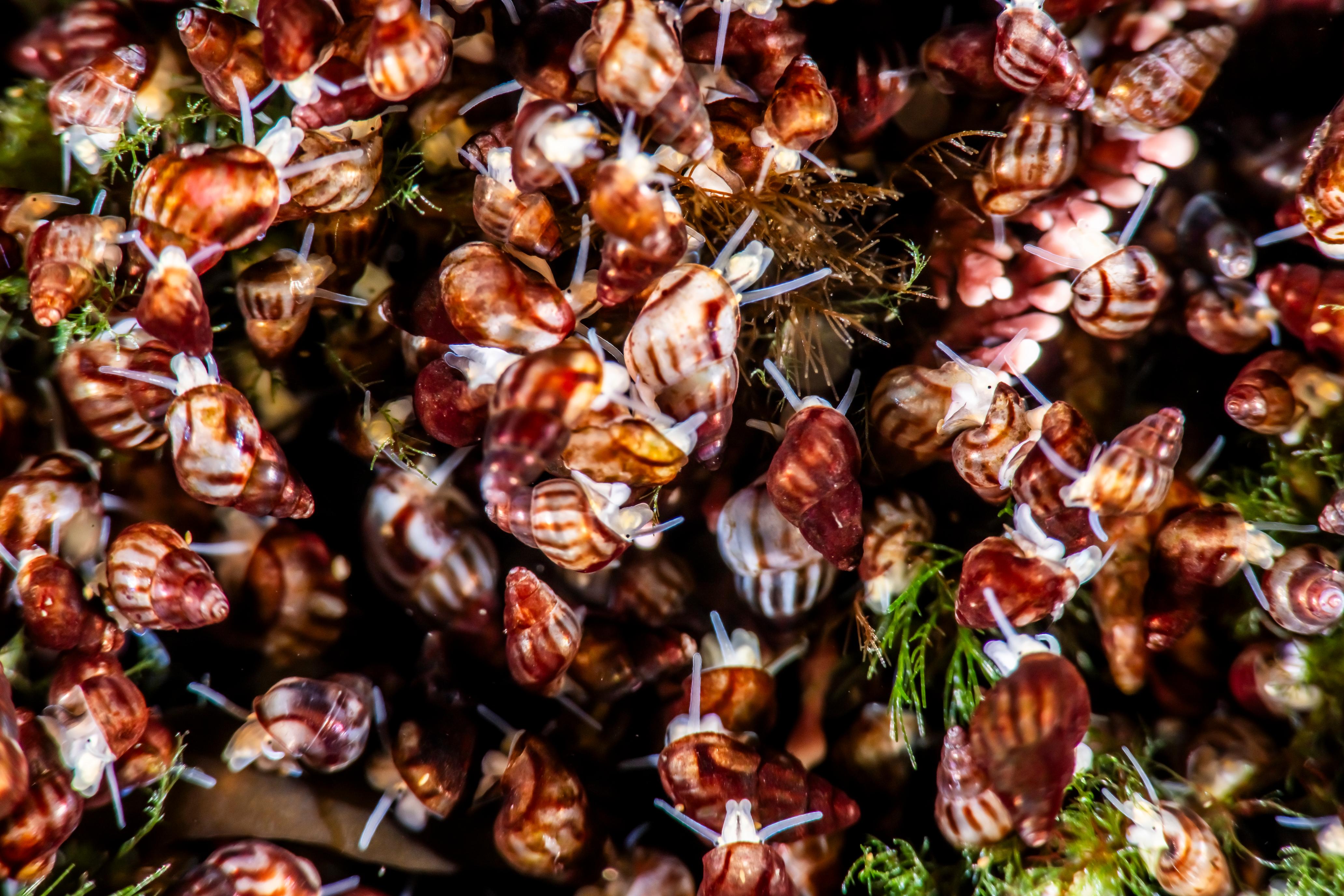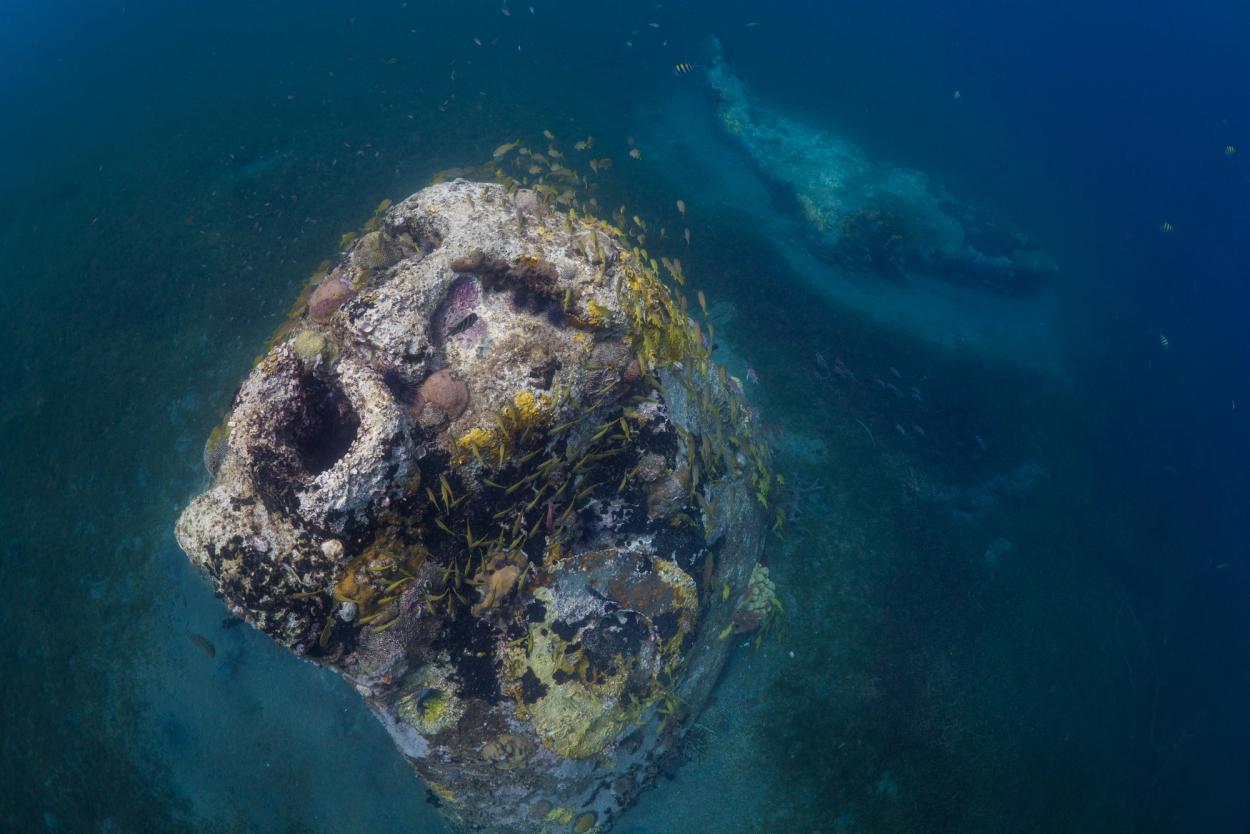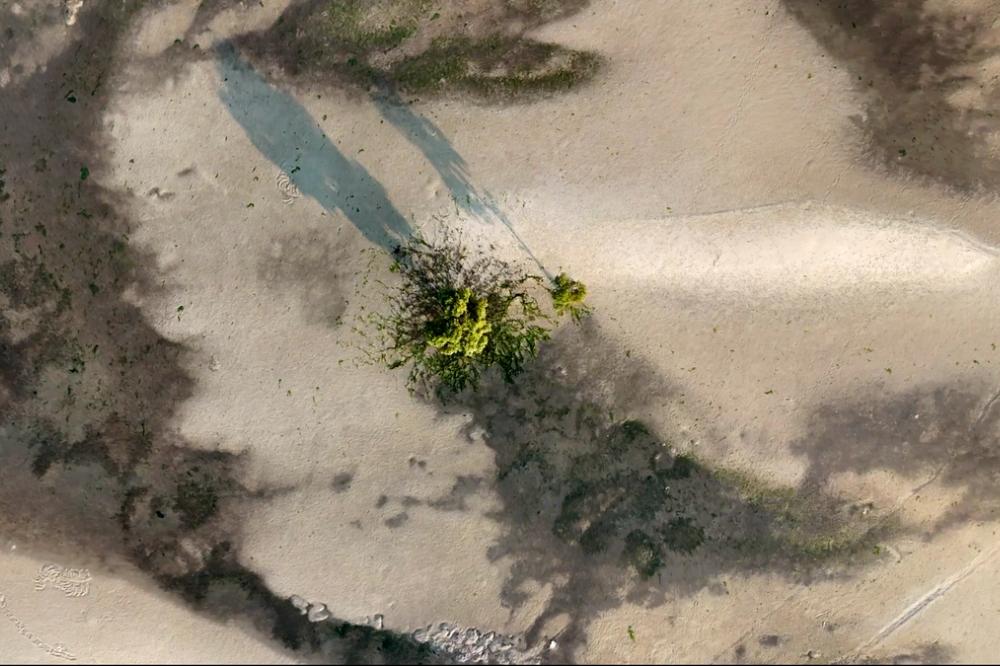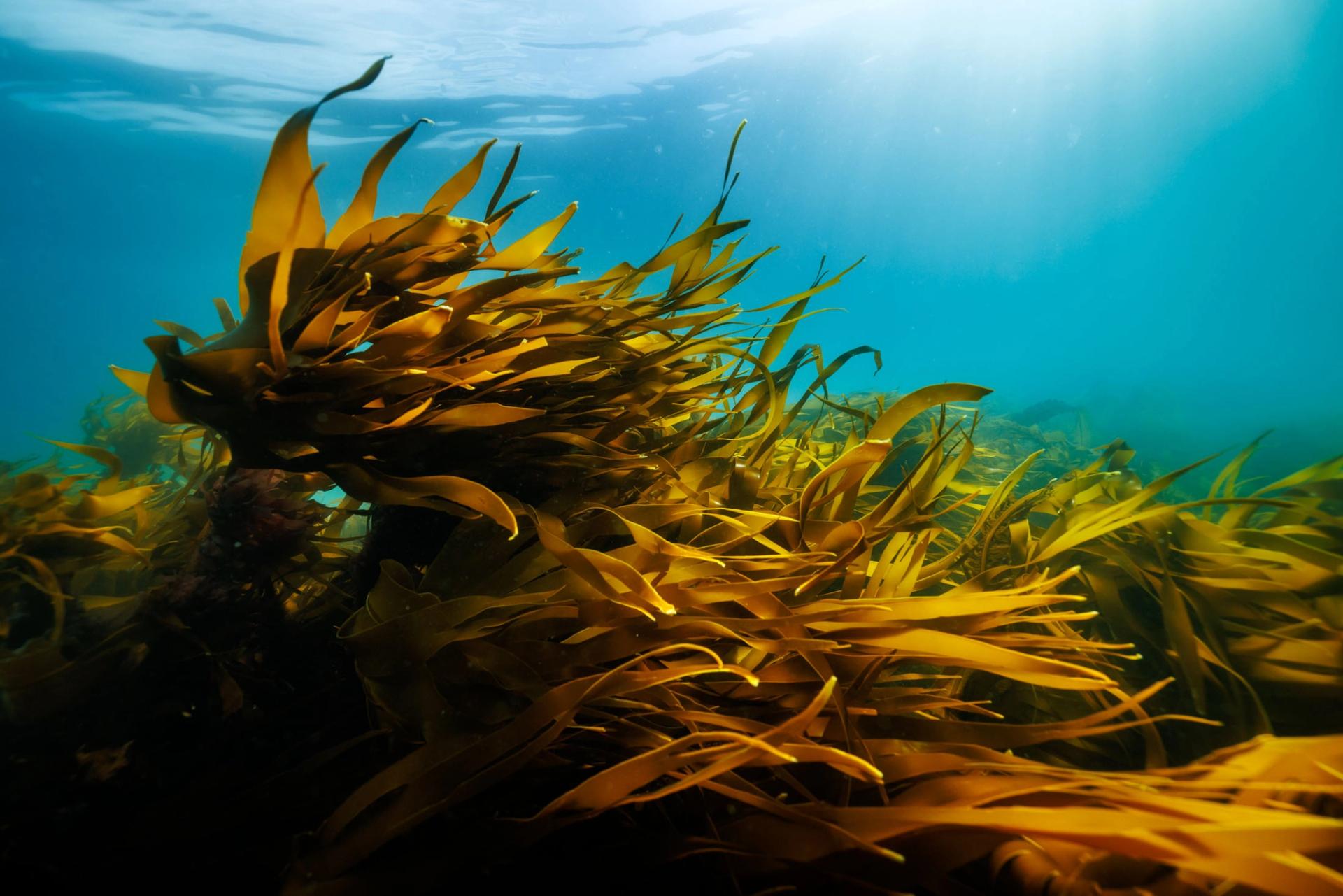
Primary and secondary production
Kelp forests © Aleksander Nordahl
On land as well as in the sea, plants or algae are the primary producers in the food chain. They are the “solar panels” that produce plant biomass (and also oxygen) from solar energy, water, CO2, and nutrients. Along our coastlines there is light (energy) sufficient for plant production down to 20-40 m depth, dependent on water visibility. Our kelp forests are among the habitats with highest primary production on the globe. With exchange of the total biomass annually, these forests can provide the coastal ecosystems with 10-20 kg of plant material per m2 as food for the next level. With some ten-thousands of square meters of kelp at the Norwegian coast, a significant input of nutrients come from the blue forests.
These images show rich forests of tangle and sugar kelp, which are primary producers. © Erling Svensen
The next level in the food chain is the secondary production. These are plant eaters (herbivores), and they may also have a high production compared to the secondary production elsewhere. However, the secondary production in kelp forests is dependent on the number of herbivores that the kelp can house. If the habitat supports few animals, excess primary production will be transported by water currents to neighboring habitats. The secondary production, given as gram produced carbon per m2 and year will always be lower than the primary production because 90% of the energy is burned by animal metabolism. By their respiration, the animals use the oxygen produced by the plants, and release CO2 that can be taken up by the next plant production. From the secondary production, the energy is transferred further up the food chain to fish, seabirds and sea mammals.
Secondary producers, such as amphipods, isopods and snails that are representative of the rich herbivore kelp fauna. © Erling Svensen
Share this story
- Ecosystems and habitats
- Life in the ocean


